The_ClocheFixer
'Le joined
A kid once said to me "Do you get hangovers?" I said, "To get hangovers you have to stop drinking." ~Lemmy Kilmister~
Some pearls from my country
Old but gold.
embedly-card wrote: ZANNA Anna Domino Luc van Acker ZANNA HQ SoundBest Duet ever
embedly-card wrote: NACHT UND NEBEL - BEATS OF LOVE [ 1984 ]Nacht und Nebel was een Belgische band. De band was actief van 1980-1986. Het debuutalbum Casablanca had zes persoonlijke, simpele en naïeve nummers met op de achtergrond een krachtige beat. Ook de optredens kunnen zo beschreven worden terwijl de hevig zwetende Patrick Nebel in een decadente outfit op het podium heen en weer liep te rennen.
embedly-card wrote: Won Ton Ton - I Lie And I Cheat (1988) [videoclip]Het prachtige werkje van dit Belgische bandje rond zangeres Bea Van der Maat. De muziek is niet van hoogstaande kwaliteit, maar ik vind het nummer te mooi om het daarom niet op te nemen. Bijzonder is ook dat dit (de clip) een versie met strijkers is, terwijl die op de single zijn vervangen door synthesizer (beluister de [320 kbps muziek]TopPop-video).
embedly-card wrote: The Radios - Walking The Thin LineThird single from the album "The Sound Of Music" (1992) Visit Bartpeeters.net & Ronnymosuse.com
embedly-card wrote: Andre Brasseur Early Bird SatelliteNO COPYRIGHT INFRINGEMENT INTENDED. COPYRIGHTS RESERVED BY COPYRIGHT OWNER.This video is used only for non-profit usage and publishing. André Brasseur, (born 1939) is a Belgian keyboard player and organist. Brasseur has released many albums and singles in his own country, but internationally is best known for his double A sided single The Kid/Holiday, which was released on the CBS label in the UK.
embedly-card wrote: Two Man Sound - CopacabanaA beautiful summer song from the famous Belgian band Two Man Sound
embedly-card wrote: Lou & The Hollywood Bananas - Kingston Kingstonnull
Funny thing is most of us don't actually know its from our own country!
Battle of the Golden Spurs, also called Battle Of Courtrai (July 11, 1302). Was a military engagement on the outskirts of Kortrijk in Flanders (now in Belgium) in which an untrained Flemish infantry militia, consisting mainly of members of the craft guilds (notably that of the weavers) defeated a professional force of French and patrician Flemish cavalry, thus checking the growth of French control over the area. It is so named for the spurs supposedly taken from the vanquished. The towns of Flanders rebelled against the occupying French army and besieged the French garrison at Courtrai castle. France then sent a relief army. The militia prevailed over the mounted force by making its stand on a patch of ground surrounded by streams and moats, thus frustrating any attempt at a rapid cavalry charge; the marshy terrain also impeded other efforts of the horsemen. This victory led to a generation of political ascendancy of the weavers’ guild in the urban centres and ended the threat of French annexation. It also began the “infantry revolution” of the 14th century. The Scots, at the Battle of Bannockburn (1314), consciously emulated the Flemings, and their victory led the English to fight on foot—and win—against the French at the Battle of Crécy (1346) and the Battle of Poitiers (1356).
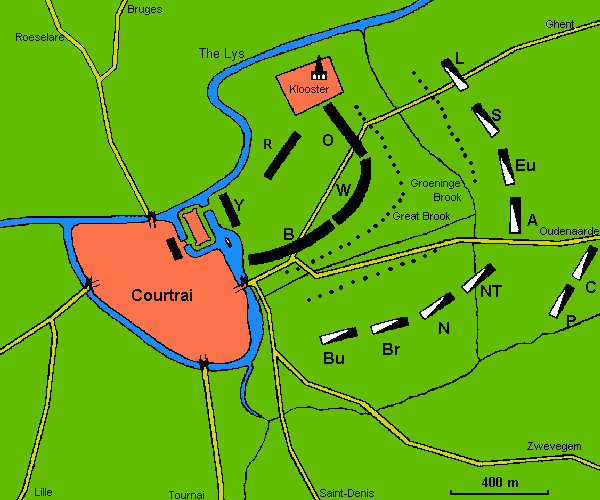
The battle
The combined Flemish forces met at Kortrijk on 26 June and laid siege to the castle, which housed a French garrison. As the siege was being laid, the Flemish leaders began preparing a nearby field for battle. The size of the French response was impressive, with 3,000 knights and 4,000–5,000 infantry being an accepted estimate. The Flemish failed to take the castle and the two forces clashed on 11 July in an open field near the city next to the Groeninge stream.
The field near Kortrijk was crossed by numerous ditches and streams dug by the Flemish as Philip's army assembled. Some drained from the river Leie or Lys, while others were concealed with dirt and branches, making it difficult for the French cavalry to charge the Flemish lines. The marshy ground also made the cavalry less efficient. The French sent servants to place wood in the streams, but they were attacked before they completed their task. The Flemish placed themselves in a strong defensive position, in deeply stacked lines forming a square. The rear sides of the square were covered by a curve of the river Leie. The front sides presented a wedge to the French army and were placed behind larger rivulets. The large French infantry force led the attack, which initially went well and managed to cross the rivulets. Subsequently however, they failed to force back the Flemish front rows. The French commander Robert of Artois became impatient and recalled his foot soldiers to free the way to the noble cavalry. The cavalry were much hindered by the streams and ditches which the infantry had more easily negotiated in the beginning of the battle, and the disciplined Flemish infantry held firm. Unable at most points to break the Flemish line of pikemen, many French knights were knocked from their horses and killed with the goedendag, the spike of which was designed to penetrate the spaces between armour segments. Those cavalry groups that succeeded in breaking through were set upon by the reserve lines, surrounded and wiped out. To turn the tide of the battle de Artois ordered his cavalry reserves to continue the charges, with the same lack of success. When ultimately the French knights became aware that they could no longer be reinforced, their attacks faltered and they were gradually driven backwards into the rivulet marshes. There the disorganized, fallen, and mud-drowned French cavalry were an easy target for the heavily armed Flemish infantry. A desperate charge from the French garrison in the besieged castle was thwarted by a Flemish contingent specifically placed there for that task. The French infantry was visibly shaken by the sight of their knights being slaughtered and withdrew from the rivulets. The Flemish front ranks then charged forward, routing their opponents who were massacred. The surviving French fled, only to be pursued over 10 km by the Flemish.
Unusually for the period, the Flemish infantry took few if any of the French knights prisoner, in revenge for the French "cruelty". Robert of Artois was surrounded and killed on the field. According to some tales he begged for his life but the Flemish refused, claiming that they did not understand French.
The goedendag Polearm, weapon of the Flemish militia:

The Belgian 1st Infantry Brigade, also known as the "Brigade Piron". Named after its commander Jean-Baptiste Piron was a Belgian and Luxembourgish military unit during World War II which participated in the Battle of Normandy and, later, the liberation of Belgium and the Netherlands and part of the Free Belgian Forces.
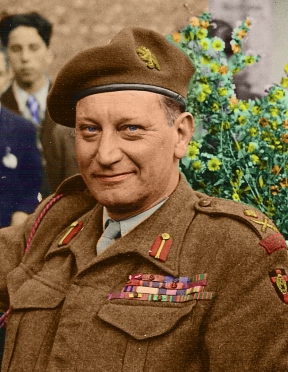
Brigade Piron originated in 1940, with hundreds of Belgian soldiers who had escaped to Britain, as had the Belgian Government. A new command of the Belgian Army, under Lieutenant-General Victor van Strydonck de Burkel, was created in Tenby on 25 May 1940, three days before the Belgian capitulation. Van Strydonck de Burkel became commander of the Belgian Forces in Great Britain in June 1940 and in the same month, a Belgian Minister (Jaspar) called upon all Belgians to come to Britain to continue fighting.
At the end of July 1940 there were 462 men in the Belgian Forces in exile; the arrival of many Belgians allowed the creation of several military units. The troops were trained in Great Britain and Canada and in 1942, Major Jean-Baptiste Piron arrived in Scotland where he quickly joined the army staff, with the responsibility of improving the training of Belgian troops. In an artillery competition, the Belgian battery came first. The Belgian Forces in Britain were officially made available to the Allies on 4 June 1942. By the end of the year the army had been restructured, including the creation of the 1st Belgian Brigade, under the command of Major Piron, with a mix of infantry, artillery and reconnaissance units. Troop training continued through 1943 and landing exercises were conducted in early 1944. A Luxembourgish unit was assigned to Brigade Piron in March, forming an artillery troop. Because the Belgians had arrived from around the world, thirty-three languages were spoken in the Brigade in 1944.
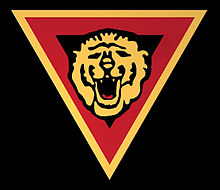
The D-Day landings took place on 6 June 1944 without Brigade Piron, to the great disappointment of its 2,200 men but the British preferred to reserve them for the liberation of Belgium. (This policy was applied to all of the smaller national military contingents, which were expected to form the basis of post-war armies and for whom it would have been difficult to find replacements for casualties.) Piron lobbied the Belgian government in exile, which requested the British Government to send the Belgian troops to the front, to reverse the declining morale of those troops.
On 29 July 1944, the Brigade was ordered to be ready to move. Its first units arrived in Normandy on 30 July and the main body arrived at Arromanches and Courseulles on 8 August, before the end of the Battle of Normandy. The Brigade operated under the command of the British 6th Airborne Division (Major General Gale), which was part of the 1st Canadian Army. The Belgians entered active service on 9 August.
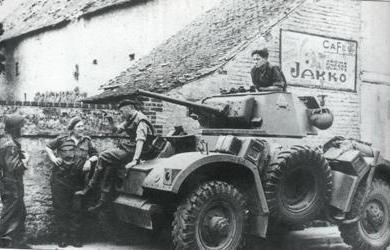
The Belgian Brigade participated in Operation Paddle, Clearing the Channel coast from 17 August with British and Dutch (Prinses Irene Brigade) troops of the 6th Airborne Division. Merville-Franceville-Plage was liberated in the evening, Varaville on 20 August. The Brigade's armoured vehicles were detached to assist British units. The Belgian armoured vehicles were reunited with the rest of the Brigade on 26 August. When Brigade Piron came under command of the 49th (West Riding) Infantry Division. On 29 August, the Brigade crossed the Seine to support Operation Astonia, the attack on Le Havre on the following day. At the last moment the Brigade was withdrawn from the front and transferred to the Second Army for operations in Belgium. The efforts of Brigade Piron on Normandy's Côte Fleurie are commemorated by memorials, road names and war graves.
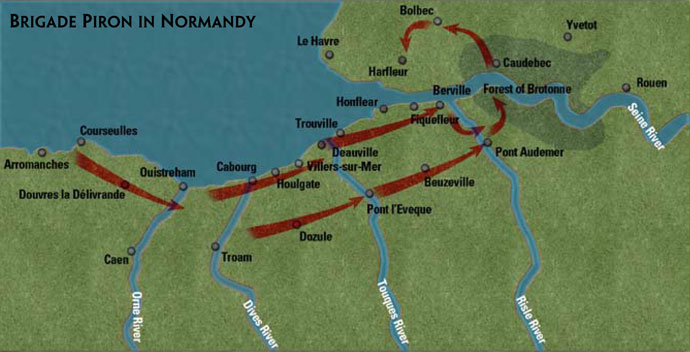
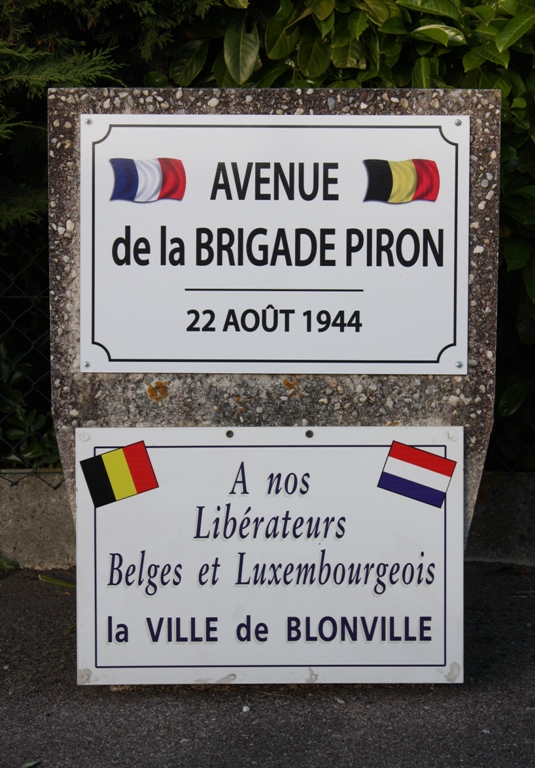
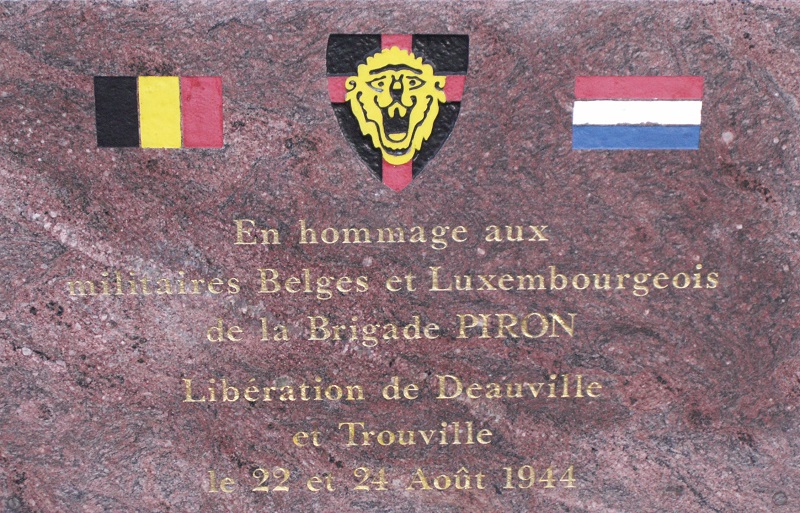
On 2 September, the Brigade and the Dutch Princess Irene Brigade had been transferred to the Second Army and ordered to move as quickly as possible to the Belgian border. The British were already in Belgium and expected to enter Brussels on the following day and this transfer would allow the Belgian and Dutch Brigades to operate in their homelands. The Brigade arrived at the French–Belgian border on 3 September, after an overnight journey and continued to Rongy in Brussels the following day, just after the British.
During their advance through Belgium, the Belgian troops were sometimes mistaken for French Canadians, since local people did not expect that their liberators would be fellow Belgians. Brigade Piron liberated other Belgian towns and cities before reaching the Netherlands border on 22 September. Its campaign in the Netherlands lasted until 17 November, when it was relieved from the front and moved into reserve in Leuven. Brigade Piron returned to the Netherlands between 11 April 1945 and June 1945. In the small Dutch border town of Thorn, a bridge has been named in honour of its liberation on 25 September 1944.
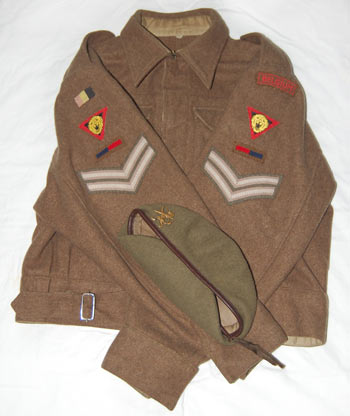
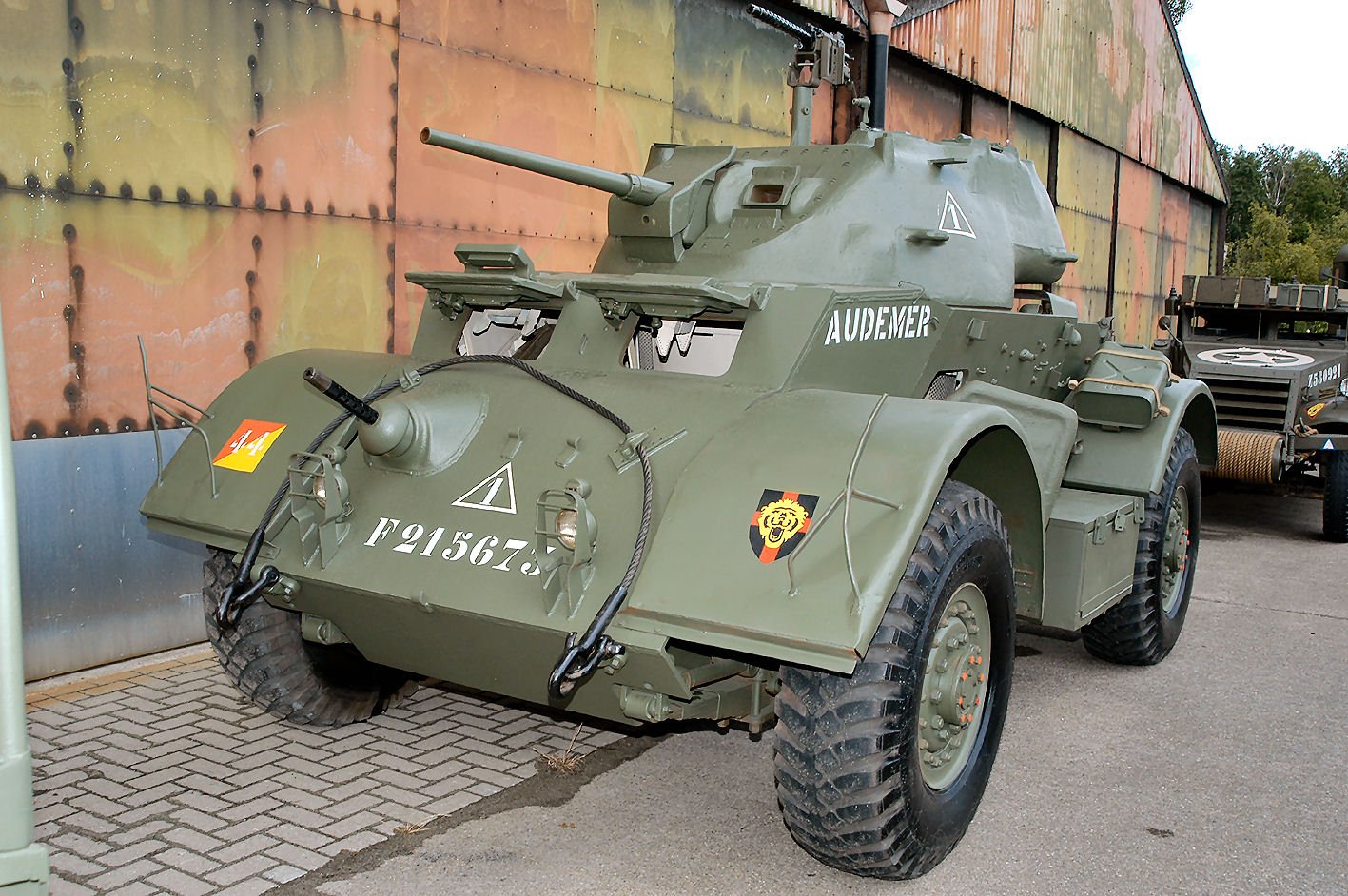
Brigade Piron formed the basis of the new Belgian Army. In a reorganisation on 17 November 1945, the Brigade's artillery and armoured units were reorganised to form specialised regiments and the engineers joined a new engineer battalion. The remaining infantry, reinforced by volunteers, became the First Brigade Liberation, based at Leopoldsburg barracks.
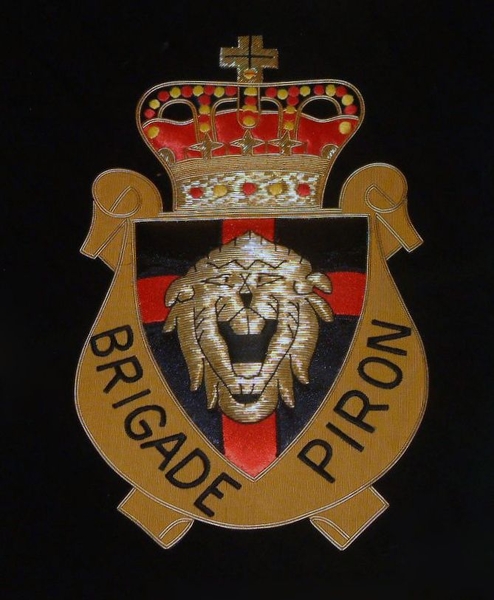
Minerva Armored Car
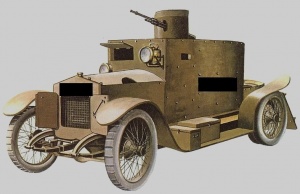
The Minerva Armored Car was a militairy armored car expediently developed from Minerva civilian automobiles by Belgium at the start of the First World War.
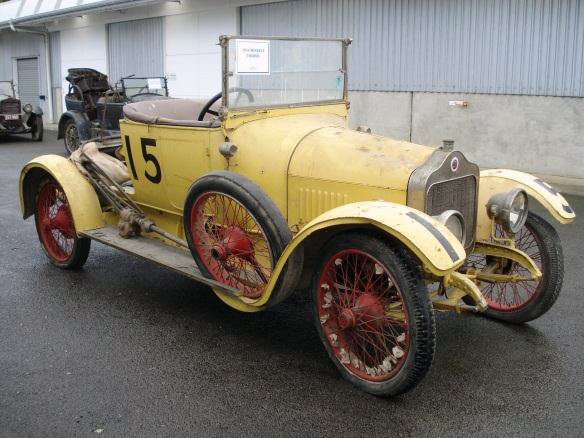
The Minerva's use in combat in August 1914 made Belgium one of the first nations to employ armoured cars in the World War I, though Italy had previously been the first to use armoured cars in a theatre of conflict, in the 1911–1912 Italo-Turkish War.
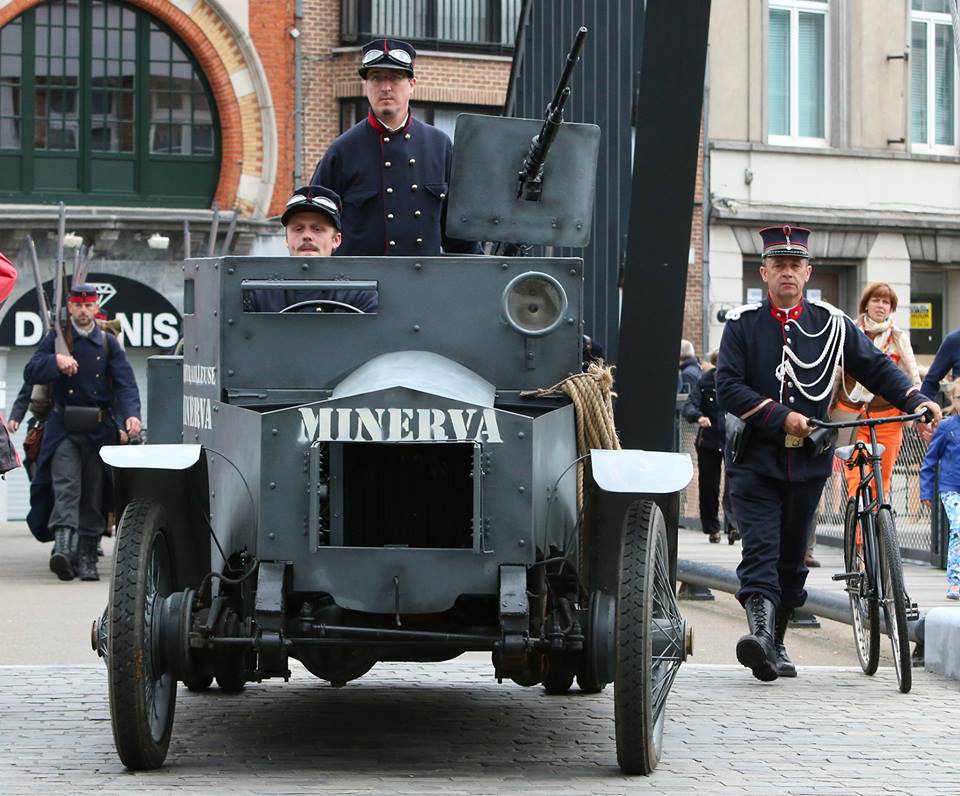
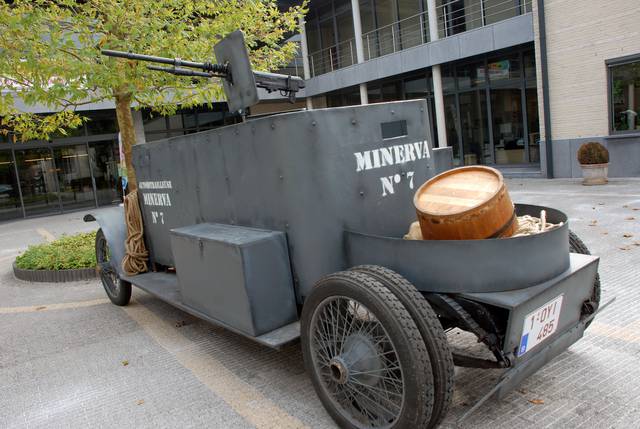
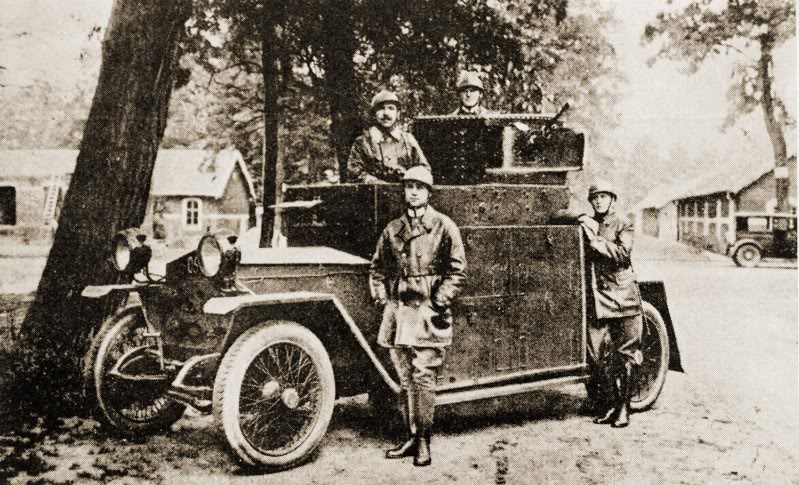
During the war those that could afford to rode to battle on their own horses, much like this in 1914, Lieutenant Charles Henkart arranged for two of his civilian Minerva Motor Works tourers to be armoured at the Cockerill Works in Hoboken. The initial armoured cars were adhoc but soon Minerva had created a standard design. American papers were reporting the use of the armoured car by September 1914. The crew was partially exposed to gun fire with the open top. This would prove fatal to Lieutenant Henkart when on September 6, 1914 he was killed by gun fire after the armoured car he was in was caught in a German ambush. Before the Minerva factory was captured during the German invasion and occupation of Belgium about thirty Minerva armored cars were built. In 1916 the design of the original armored car was completely revised. The open top was now fully enclosed and the machine gun under an armored cupola. The Belgian Army used the cars as motorized cavalry units with three-cars platoons. The armoured car units were mostly used for reconnaissance, infantry fire support and missions behind enemy lines. After the Western Front became bogged down in trench warfare some of the cars were sent to the Eastern Front with the Belgian expeditionary corps in Russia.

The Germans were able capture three of the cars and modified them for use during the invasion of Romania with at least one being used during the 1919 troubles. They even saw use in the Spanish Civil War in the late 1930s.
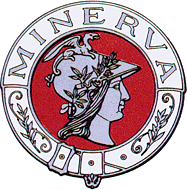
In class keeps a teacher a 10 euro note in the air and asks: "who wants him?" Of course all students raise their hand. Then crease the note and he asks: "do you want it still?" All students raise their hands again. The teacher throws the note on the ground and starting to stamping and asks: "would you like him now?" And all students raise their hands again.
Then the teacher says: "you have learned an important lesson today! No matter what I do with this 10 euro, and yet would you like to have him, you know why? that's because its value always remains the same, what you also does he is and will always be worth 10 euros! And will never lose its values! You will be desperate several times in your live and some people be jostled, sewn or even hated. and you'll feel that you're worth nothing more but be aware, however, no matter what torments you experienced in life, how many people push you away!
Love the honor to your self and love the people you love, just so you never become worthless! And only in this way you will never lose your values! Even if you do not possess wealth, and nothing more, never lose your own values!!

I was bored so I made this.
How should I start.... Well a few days ago American president candidate Donald Trump asserted that Brussels (the capital city of my country) is the Hellhole on earth.. Yes you've read it right THE HELLHOLE ON EARTH. But to me his stupid pronouncements are nothing new. For example on his twitter page: "It is a real disaster in Paris. They are really bad busy in Germany"..... Yes he changed Paris and Berlin (or France and Germany)...
But I could also start about the weapon politics he find so wonderfull and important wich I am not gonna do... I've only one opinion about it: I live in Belgium and its a save feeling that the person in front of you probably don't have a gun in his pockets because you can't get a weapon easely in Belgium.
Now about Brussels (remberer he called Brussels a hellhole? Good.)
There is a famous Belgian (Flemish) radio station called Studio Brussel (studio Brussels) who joked that they will change there name in Studio Hellhole if Donald Trump becomes US President. Also in Brussels there is a famous concert hall called the AB (Ancienne Belgique) this is their new signboard:
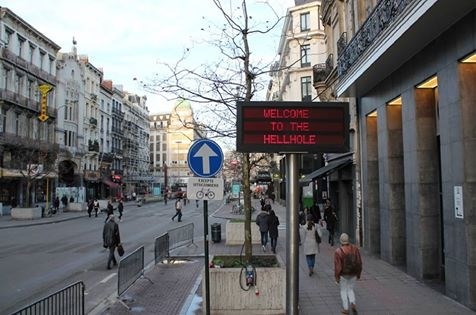
Here is the whole article ( It's in Dutch): Standaard.be
This is my rambling for now. You are free to point out your opinion about this. :)
